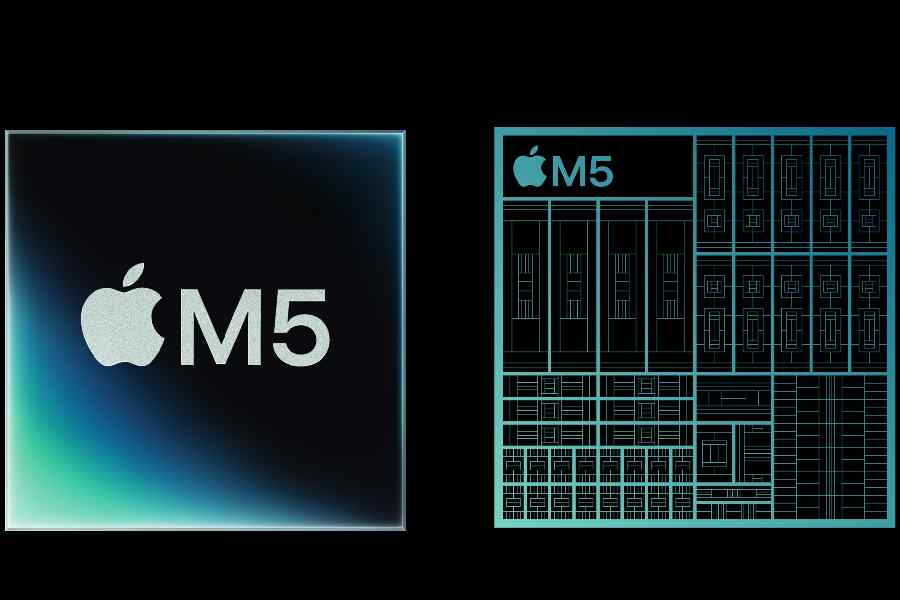Apple’s new chip is the M5. It is bringing power-efficient performance to the new 14-inch MacBook Pro, iPad Pro, and Apple Vision Pro while offering a big leap in artificial intelligence performance.
Built using third-generation 3-nanometre technology, the M5 delivers significant upgrades across CPU, GPU and Neural Engine performance. At the heart of the new chip is a 10-core GPU featuring a Neural Accelerator in each core, a first for Apple Silicon. This configuration enables GPU-based AI workloads to run up to four times faster than on last year’s M4 chip and over six times faster than the original M1. The GPU also introduces Apple’s third-generation ray-tracing engine and enhanced shader cores, which together offer up to 45 per cent higher graphics performance.
M5 unleashes next-level AI performance with its next-generation GPU architecture, powerful CPU, faster Neural Engine, and higher unified memory bandwidth.
Johny Srouji, Apple’s senior vice-president of Hardware Technologies, described M5 as “the next big leap in AI performance for Apple Silicon”. He said: “With the introduction of Neural Accelerators in the GPU, M5 delivers a huge boost to AI workloads. Combined with a big increase in graphics performance, the world’s fastest CPU core, a faster Neural Engine, and even higher unified memory bandwidth, M5 brings far more performance and capabilities to MacBook Pro, iPad Pro, and Apple Vision Pro.”
The M5’s CPU architecture features up to four performance cores and six efficiency cores, resulting in up to 15 per cent faster multithreaded performance compared to the M4. Apple has also improved the 16-core Neural Engine, enabling faster processing for AI-driven features such as transforming 2D photos into spatial scenes or generating Personas on Apple Vision Pro.
A major improvement is the 30 per cent increase in unified memory bandwidth, now reaching 153GB/s. This allows the chip to handle larger AI models entirely on-device, supporting creative and productivity workflows in applications like Adobe Photoshop and Final Cut Pro. Developers using Apple’s Foundation Models framework or Metal 4 API will also benefit from direct access to the Neural Accelerators for AI-specific workloads.











